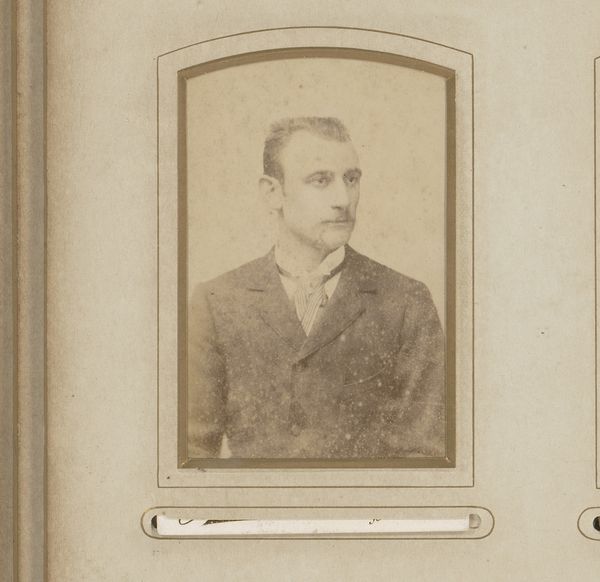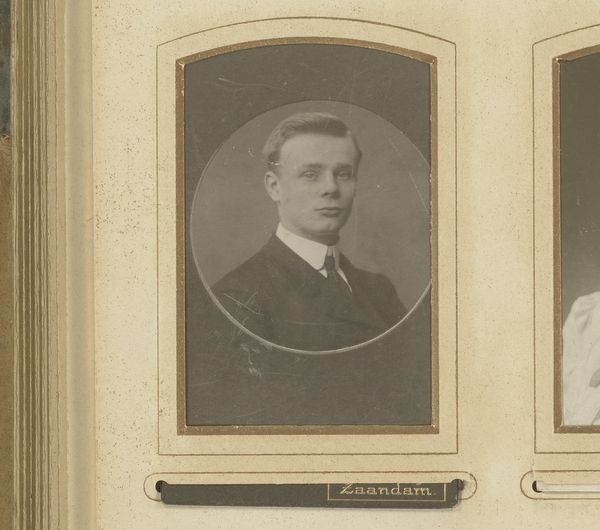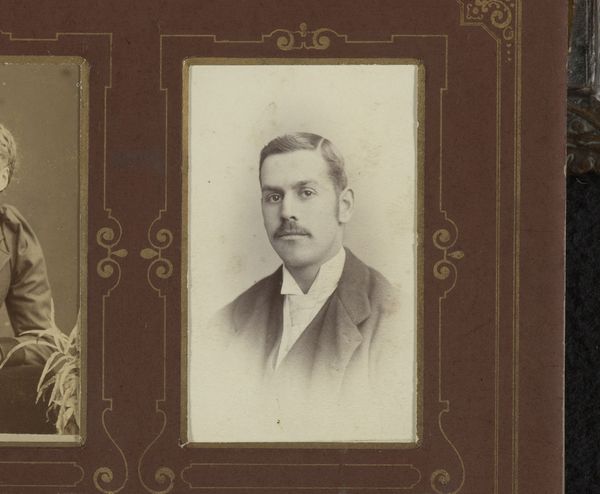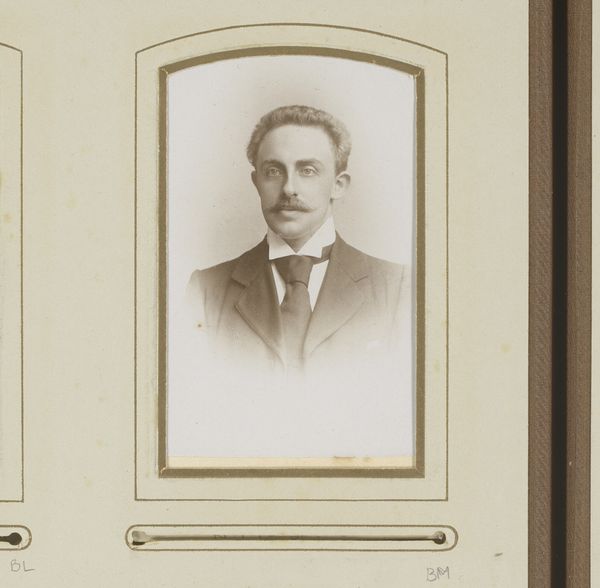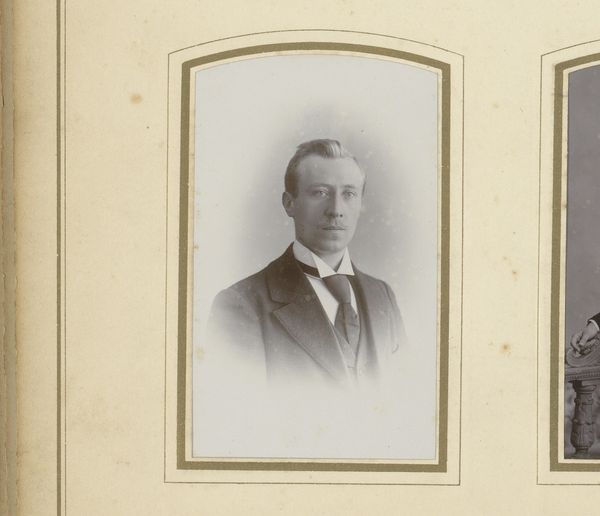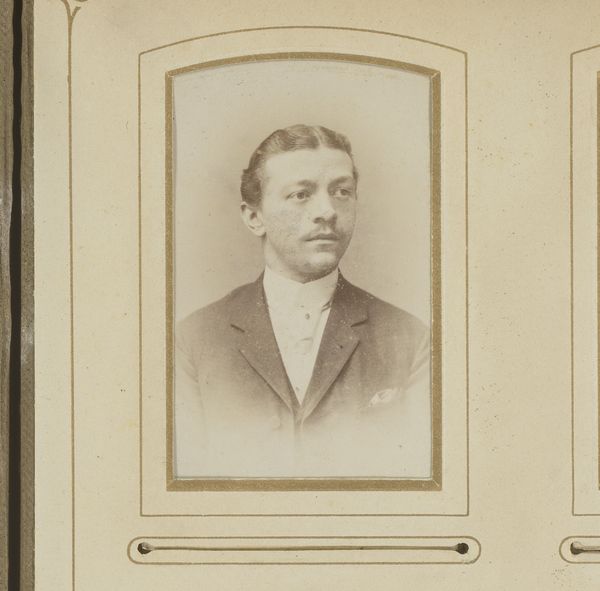
photography, gelatin-silver-print
#
portrait
#
photography
#
historical photography
#
portrait reference
#
gelatin-silver-print
#
genre-painting
#
modernism
Dimensions: height 83 mm, width 53 mm
Copyright: Rijks Museum: Open Domain
Curator: This gelatin-silver print, "Portret van een man met snor", dates from between 1911 and 1914. It's currently held at the Rijksmuseum. What are your initial thoughts? Editor: It’s a remarkably stern face. The composition feels very formal, the way his suit mirrors the right angles of the photographic frame. And the tonal range in this gelatin-silver print—it's very subtle, focusing attention entirely on the subject's expression. Curator: Absolutely. The image was created during a time of massive shifts in photographic practice. Photography was transitioning from being a specialized skill to a widespread technology thanks to advances in manufacturing and marketing. The widespread availability of photographic services put pressure on studios catering to all demographics and impacting portraiture style trends. Editor: You know, looking at the formal pose and the high contrast between the white collar and dark suit, it presents the visual conventions for masculine identity during the early twentieth century, yet, even the subtle texture visible on this gelatin-silver print invites a very tangible encounter with the subject despite its stoicism. Curator: And the rise of photo studios also parallels with the increased urbanization. So you see all these interesting relationships develop as portrait studios are booming within these growing metropolitan centers because people are working and establishing their identities there. The ability to capture and own one's image shifted in the material culture, changing ideas surrounding memory, history, and the self. Editor: I agree entirely. Even within the formal constraints of this period, I think the composition emphasizes an individual presence that is striking in this medium. It’s about capturing and conveying a certain mood more than simply replicating an image. It brings questions to the role of modern art beyond pure representation. Curator: These photographs are often overlooked; we frequently prioritize painting or sculpture when we discuss high modernism, but practices in photography provided opportunities for participation that shaped a social and cultural imagination in profound ways. Editor: I'm drawn to how the use of monochrome renders the portrait both timeless and historically grounded. It transcends simple documentation, offering insights into the artist's compositional and aesthetic choices, echoing a visual rhetoric through simple tools. Curator: Well, seeing it in that formal framework sheds light on how these pictures were crucial cultural and political commodities as well, far from neutral representations. Editor: Indeed. It reminds us that portraits—even these modest gelatin-silver prints—carry remarkable power in visual economy.
Comments
No comments
Be the first to comment and join the conversation on the ultimate creative platform.
